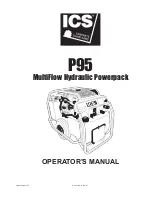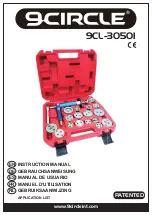
Jigsaw WX473 WX473.1 WX474
11. PLASTIC FOOT PLATE PROTECTION
Your tool is equipped with base plate protection that
protects finer surface.
To attached, hook the protection over front of base plate
and snap into place at the rear of base plate.
12. BASE PLATE ANGLE ADJUSTMENT
Use an Allen key (5). First loosen the bolts securing the
base plate and pull the base plate out of the slots
(See Fig. H). For preset angles rotate so the lines of the
angle on the base plate and angle plate (9) superposition
at the desired angle (0, 15, 30, 45) (See Fig. I). For
other bevel angles, rotate to your desired angle (use a
protractor scale). Following one of the above procedures,
hold the base plate in position and firmly tighten the bolts
to clamp the base plate at that angle. Finally, check the
angle and ensure the base plate is firmly clamped. The
angle markings on the base plate are accurate for most
general purposes but it is recommended for accurate
work to set the angle with a protractor and make a test cut
on other material.
13. VACUUM ADAPTER
The adapter (6) rotates anti-clockwise inside the housing
and locks in position by a groove inside the housing
(See Fig. J&K). The adapter must then be connected to a
suitable external dust extraction machine.
14. PROTECTION FINGER
The finger (15) is located in front of the blade holder.
Whilst working, it will help prevent accidental contact
with moving blade.
15. DUST BLOWER SWITCH (See Fig. L)
The sawdust blower device leads an air jet to the saw
blade. The air jet avoids sawdust from covering the
cutting line during operation.
The sawdust vacuum device can be connected to the
cleaner. Push the switch to the vacuum position, the
cleaner will imbibe the sawdust through the vacuum
adapter.
·
As a suction mechanism for the suction of
cutting dust.
NOTE:
You should connect the vacuum adapter to the
cleaner when you use the sawdust vacuum function.
·
As a blower for blowing cutting dust away from
the holes of the blade guard and into the area
during cutting operation.
I
J
K
L
M
N



































